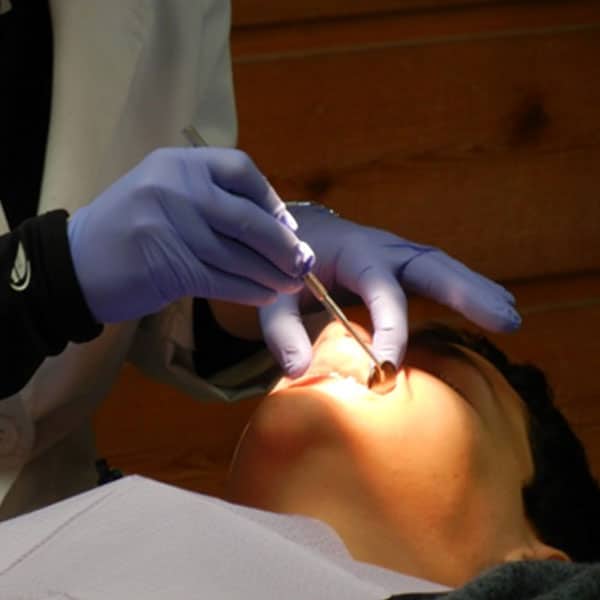A regular part of the assessment of your dental health involves a periodontal screening. You may have had your dentist or dental hygienist tell you they need to “probe” your gums or you may remember your dental professional walking a small ruler around your teeth and calling out numbers… 3, 2, 3, 3, 2, 3, and so on. This procedure is called periodontal charting and is part of the periodontal screening process used to determine the overall health of your gums.
The gums, ligaments and bone are the supporting structures of the teeth. When a disease process is active, the gums are the first of these structures to be damaged. If allowed to continue, the ligament and bone will be damaged over time. This is where the periodontal screening comes in handy. By measuring the pocket in 6 places around each tooth, documenting the points of bleeding and measuring any recession (loss of gum tissue), your dental professional is able to determine the overall health of your gums and bone. The best part? This provides a baseline to measure your future gum health! Periodontal charting should be completed at least once per year.
You may wonder what the numbers mean? A pocket depth of 1, 2 or 3mm generally means the gum health can be managed between at home care and your regular visits for dental hygiene treatment. A 4mm pocket can mean two things – either inflammation is present and can be resolved with removal of bacteria, or there is bone loss. Pockets that are more than 4mm most certainly indicate bone loss and must be managed in a more aggressive manner. A deeper cleaning with the gum tissues being frozen may be the first step in treating these deep pockets. If pockets are too deep, a referral to the periodontitis, or gum specialist, may be in order.
A periodontal screening is the first step to gain tangible information that can be compared year to year in the monitoring of gum health. This is just one of the pieces of information required to develop a diagnosis in the stage and grade of gum disease. More information to come soon regarding this topic in a future dental blog! As always, our team at Simcoe Family Dentistry is open to answering any questions you may have about your dental health!





